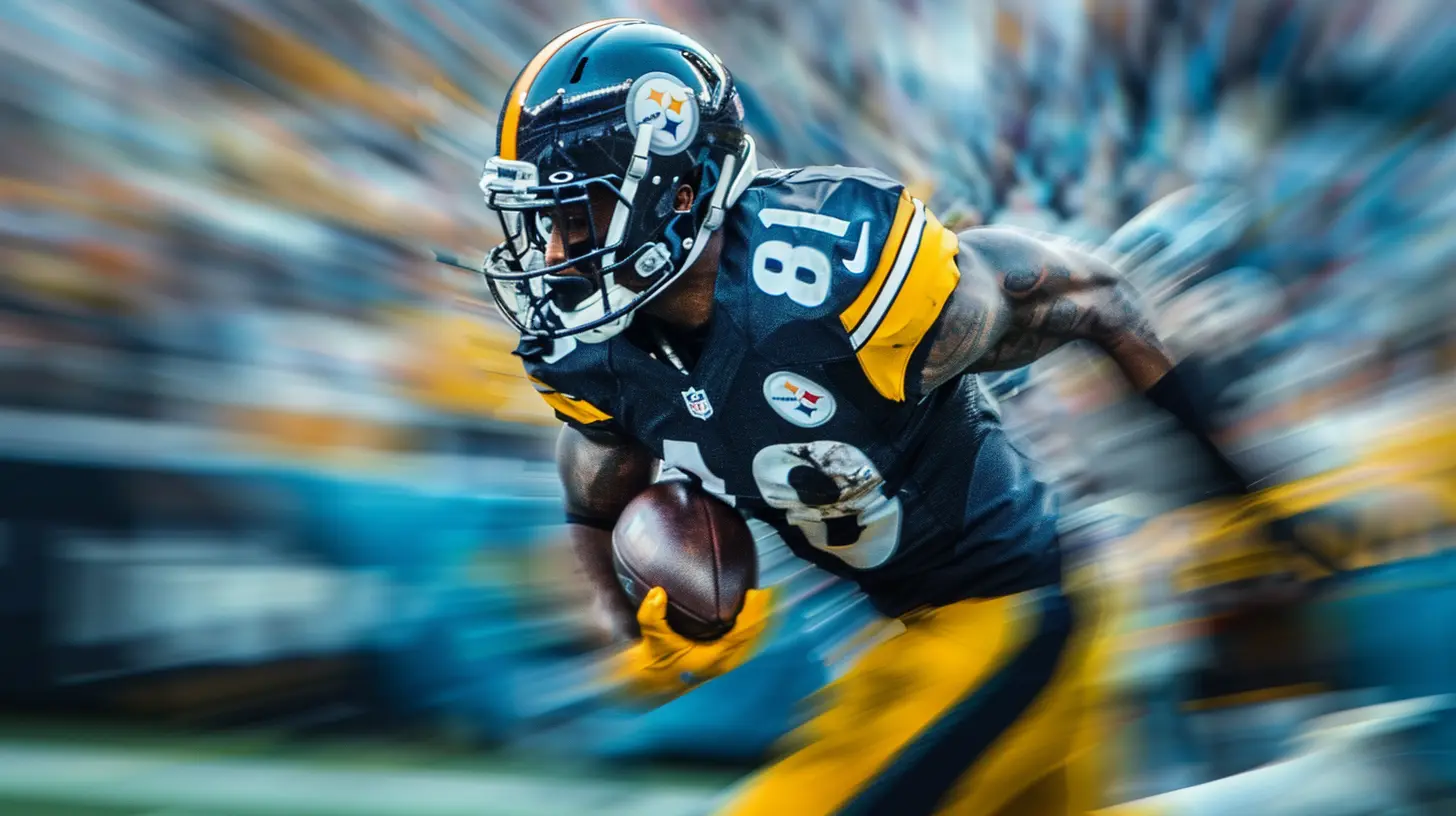The Anatomy of a Sports Contract: What Every Fan Should Know
13 November 2025
Sports contracts might seem like a boring stack of papers that only lawyers and agents care about. But here’s the thing — they’re the glue that holds the entire sports world together. Whether it's a $500 million quarterback deal or a fresh rookie signing their first pro contract, every move shapes the game in ways fans don’t always see.
So, what actually makes up a sports contract? What goes on behind the scenes when your favorite team signs that headline-making superstar? In this article, we’re going deep into the nuts and bolts of sports contracts — the stuff every true fan should know.
What Exactly Is a Sports Contract?
At its core, a sports contract is a legally binding agreement between an athlete and a team (or organization). In most cases, it lays out the rules of engagement: salary, length of the deal, performance expectations, bonuses, perks, and more. Just like any job offer — but on steroids.Imagine a job offer letter that also includes millions in bonuses for winning, clauses for injuries, personal conduct rules, and even restrictions on your hobbies (yep, no snowboarding if you're in the NFL). That’s the kind of detail packed into these agreements.
Key Components of a Sports Contract
Let’s dive into the main parts that make up a typical professional athlete's contract.1. Length of the Contract
First things first — how long will the athlete be tied to the team? Contracts can span a single season or stretch out over a decade. Rookie contracts are often shorter and fixed by league rules, while veterans might negotiate for longer commitments.But here’s the twist: Not all years in a contract are guaranteed, and that brings us to our next point.
2. Guaranteed vs. Non-Guaranteed Money
This is where the money talk gets serious. In some sports, like the NBA or MLB, much (or all) of a contract is guaranteed — meaning the player gets paid no matter what (unless they breach the contract, of course).In the NFL? Not so much. An NFL player might sign a $100 million deal, but only $40 million might be guaranteed. The rest? That’s conditional — stay healthy, perform well, and don’t get cut.
This is why you’ll often hear players and agents fighting hard for guaranteed money — it’s their financial safety net.
3. Salary and Bonuses
Sure, the base salary gets all the headlines, but bonuses can be just as important — sometimes even more.You’ve got:
- Signing Bonuses – Paid upfront just for putting pen to paper.
- Roster Bonuses – Paid if the player is still on the team by a certain date.
- Performance Bonuses – Hit 20 home runs? Throw 30 touchdowns? Cha-ching.
- Playoff Bonuses – Earn extra cash for making deep postseason runs.
Bonuses add layers to contracts and give players extra motivation to perform.
4. Incentives and Triggers
In sports contracts, incentives can be like Easter eggs — hidden gifts waiting to be unlocked if certain conditions are met.For instance, an NBA player might get a scoring bonus if they average over 25 PPG. Or a pitcher could hit a bonus if they strike out 200 batters.
These incentives keep contracts flexible and reward overachievement.
5. Trade Clauses
Some players (especially superstars) have “no-trade” or “limited-trade” clauses. What do they do? They give the athlete power to block or approve trades to certain teams.It’s kind of like putting a seatbelt on your career — you don’t want to wake up and suddenly find yourself on a last-place team halfway across the country.
6. Opt-Out and Player/Team Options
Contracts aren’t always set in stone to the end. Sometimes, players or teams can decide to cut the deal short.- Player Option: The player can choose to stay or hit free agency.
- Team Option: The team decides whether to keep the player.
- Opt-Out Clause: Either side can end things early.
This flexibility can shift entire franchises depending on how it's used.
7. Injury and Medical Clauses
In a game where physical health is everything, contracts often include language about what happens if a player gets hurt.Some contracts limit guarantees in case of certain injuries. Others have stipulations about rehabilitation timelines or second-opinion rights when injuries occur.
Injuries can reshuffle a team’s season, and these clauses ensure everyone’s protected — or at least covered.
8. Morality and Conduct Clauses
Off-the-field behavior matters. Morality clauses can allow teams to void or restructure deals if a player gets into legal trouble or violates certain behavioral standards.Think of it as a quality control measure — keeping the team and league’s reputation intact.
Salary Cap and Its Role
There's another layer to this money maze — the salary cap.Most major leagues have some form of a salary cap, which limits how much a team can spend on player salaries. The purpose? Competitive balance. You don’t want the rich teams hoarding all the stars, right?
Let’s break it down by league:
- NFL: Hard cap — strict limit.
- NBA: Soft cap — teams can exceed it under special rules.
- MLB: No formal cap, but there's a luxury tax that penalizes overspending.
- NHL: Hard cap — similar to the NFL.
So, when a team is negotiating a new deal, the cap is part of the math. It’s not just about what a player wants — it’s also about what a team can afford within the rules.
Free Agency and How It Changes the Game
Once a player’s contract ends, they can hit free agency — basically the sports world’s version of job hunting. But not all players are free agents the same way.Major pro leagues divide players into restricted and unrestricted free agents.
- Unrestricted Free Agent (UFA): Free to sign with any team.
- Restricted Free Agent (RFA): Current team has the right to match any offer the player gets.
Free agency can flip the entire landscape of a league in the off-season. Just look at LeBron’s decision to leave Cleveland (twice) or Tom Brady’s move to Tampa Bay.
What Do Agents and Lawyers Do, Exactly?
Negotiating all this isn’t a DIY job. That’s where agents and sports lawyers come in.- Agents: They negotiate deals, find endorsement opportunities, and serve as a player’s career manager.
- Sports Lawyers: They dig into the legal side — contract language, dispute resolution, and compliance.
Without them, athletes can end up in contracts that look good on paper but fall apart in practice.
Collective Bargaining Agreements (CBA)
Every league has a CBA — a master contract negotiated between players’ unions and leagues. It sets the rules for pay, working conditions, benefits, and even discipline.Think of the CBA as the rulebook that all contracts must follow. It creates a level playing field (well, sort of) for teams and players.
These agreements aren’t static either — they’re renegotiated every few years. When they break down, you get lockouts or strikes, which no fan wants to see.
Buyouts, Waivers, and Dead Money
Let’s talk about how teams escape bad contracts.- Buyouts: The team pays the player to leave early — sounds harsh, but it’s legal.
- Waivers: A way for teams to release players while giving other teams a chance to claim them.
- Dead Money: This is the salary cap hit a team takes for a contract even after the player is gone. It’s like a financial ghost haunting the team’s books.
These tools help teams reset, rebuild, or make room to chase bigger fish.
Real-Life Examples That Shocked the Sports World
Contracts shape franchises. Here are just a few that made headlines:- Patrick Mahomes’ $503 million contract: The biggest in sports history. But only part of it is guaranteed.
- Alex Rodriguez’s $275 million Yankees deal: Historic for MLB, it showed teams were willing to throw big bucks at legacy players.
- Lionel Messi’s Barcelona contract leak: Showed just how much money global soccer stars can command.
These aren’t just numbers — they’re game-changers.
How It All Affects Fans
You might be thinking, “Okay, but how does this impact me?”A lot, actually.
- Ticket prices? Influenced by payroll and contracts.
- Team loyalty? Shaped by how well management retains star players.
- Fantasy sports? Directly affected by contract disputes, injuries, and holdouts.
- Merch sales and jerseys? Often spike right after a big signing.
Contracts don’t just affect players and teams — they shape the entire sports experience.
Final Thoughts
Sports contracts are about more than just money. They’re strategic blueprints, power plays, and sometimes — flat-out gambles. For fans, understanding how they work deepens your appreciation of the entire sports ecosystem.So the next time your team signs a big free agent or cuts a high-paid veteran, you’ll know exactly what’s going on behind the curtain. And trust us — it’s way more interesting than just “X number of years, for Y dollars.
all images in this post were generated using AI tools
Category:
Sports ContractsAuthor:

Ruben McCloud

